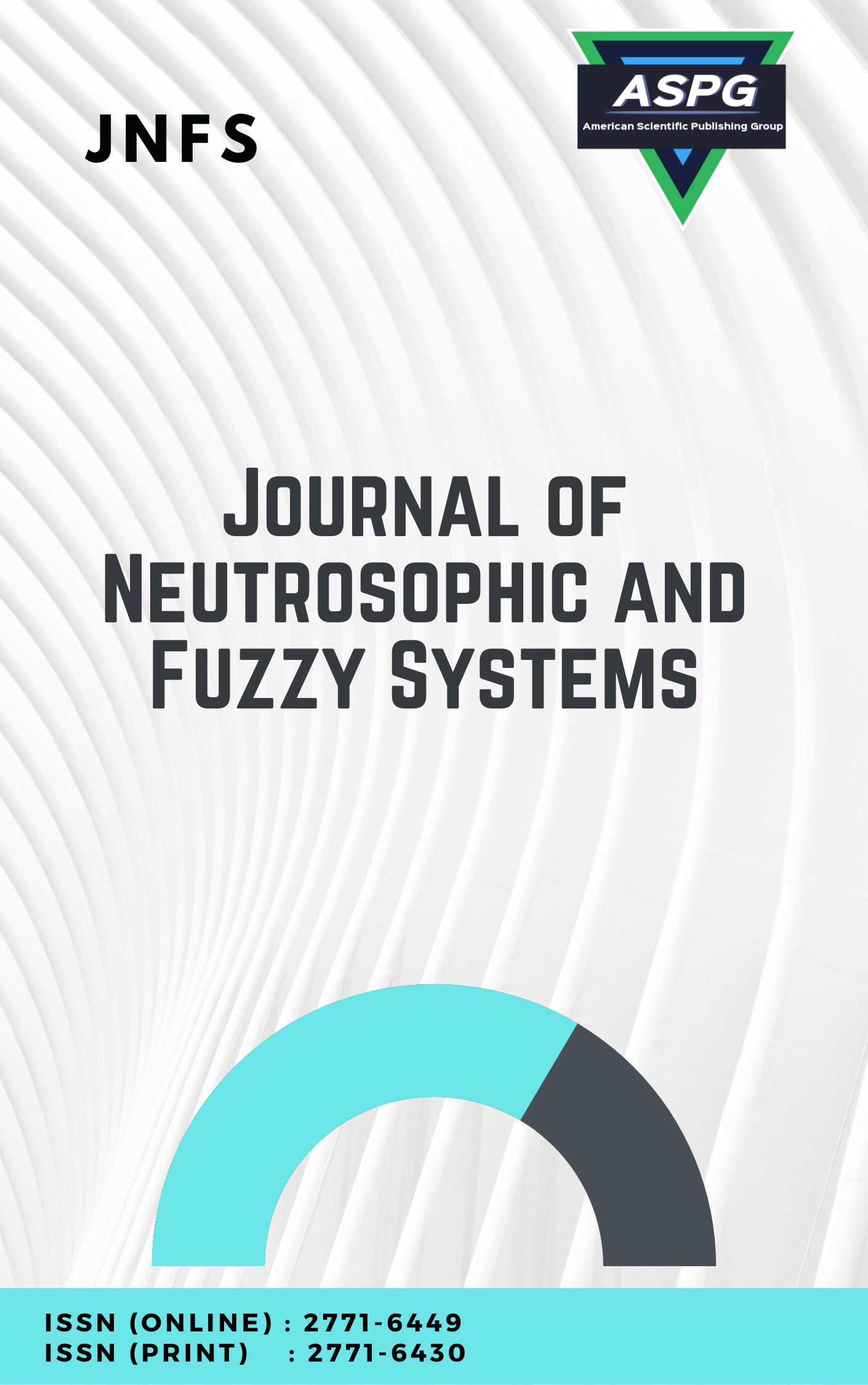

This paper is dedicated to finding all invertible elements (algebraic units) in 14 different finite neutrosophic rings modulo integers 𝑍𝑛(𝐼) for all 3≤n≤16. We arrange the elements of the group of units of each ring in a table called the units table of the ring.
Read MoreDoi: https://doi.org/10.54216/JNFS.090101
Vol. 9 Issue. 1 PP. 01-18, (2024)
This paper is concerned with the study of the classification of 3-cyclic refined real vector spaces by semi-module isomorphisms, where we use this algebraic technique to find the algebraic relationship between real 3-cyclic refined vector spaces and classical vector spaces. Also, we define the inner products on these spaces and prove many related inequalities.
Read MoreDoi: https://doi.org/10.54216/JNFS.090102
Vol. 9 Issue. 1 PP. 19-27, (2024)
This paper is dedicated to define and study for the first time the concept of two-fold neutrosophic group by combining two-fold algebras with the classical concept of neutrosophic group. We study the elementary properties of this novel concept by many related theorems and illustrated examples.
Read MoreDoi: https://doi.org/10.54216/JNFS.090103
Vol. 9 Issue. 1 PP. 28-31, (2024)
Let I be a right (left) ideal of a ring R, then R/I is a right (left) generalized m – flat module (GmF – module) if and only if for each a Î I , there exists b Î I and a fixed positive integer m such that . In this paper, we study the characterization and properties this class of flat modules, and we give the relation between this class and generalized m- flat modules and m– regular rings, reduced rings, reversible rings and uniform rings.
Read MoreDoi: https://doi.org/10.54216/JNFS.090104
Vol. 9 Issue. 1 PP. 32-35, (2024)
The objective of this paper is to find all formulas that describe the 3-cyclic refined neutrosophic real solutions of the equation 𝑋𝑛=1 which are called 3-cyclic refined real roots of unity. Also, we classify the algebraic group represented by these solutions as a direct product of some familiar finite abelian groups. On the other hand, we illustrate many examples to clarify the validity of our work.
Read MoreDoi: https://doi.org/10.54216/JNFS.090105
Vol. 9 Issue. 1 PP. 36-42, (2024)
Recent time data representation and visualization is considered as one of the major issues. It become more crucial when the data sets exists beyond the non-euclidean geometry and its hybridization also. There are several examples given by non-euclidean geometry by Lobachevsky, Bolyai, Riemannian which contains failure of Euclid postulates V and II, respectively. The problem arises when none of the Euclid Postulates exists. It might possible that the data sets contains unknown or co-ordinate free geometry. In this case the data can be explored based on a defined vector space rather than available co-ordinate geometry. It require human Turiyam consciousness to explore these types of unknown, undefined, co-ordinate free data. To understand this problem current paper explores the Turiyam geometry and its basic for exploring the unknown or undefined data with an example.
Read MoreDoi: https://doi.org/10.54216/JNFS.090106
Vol. 9 Issue. 1 PP. 43-53, (2024)